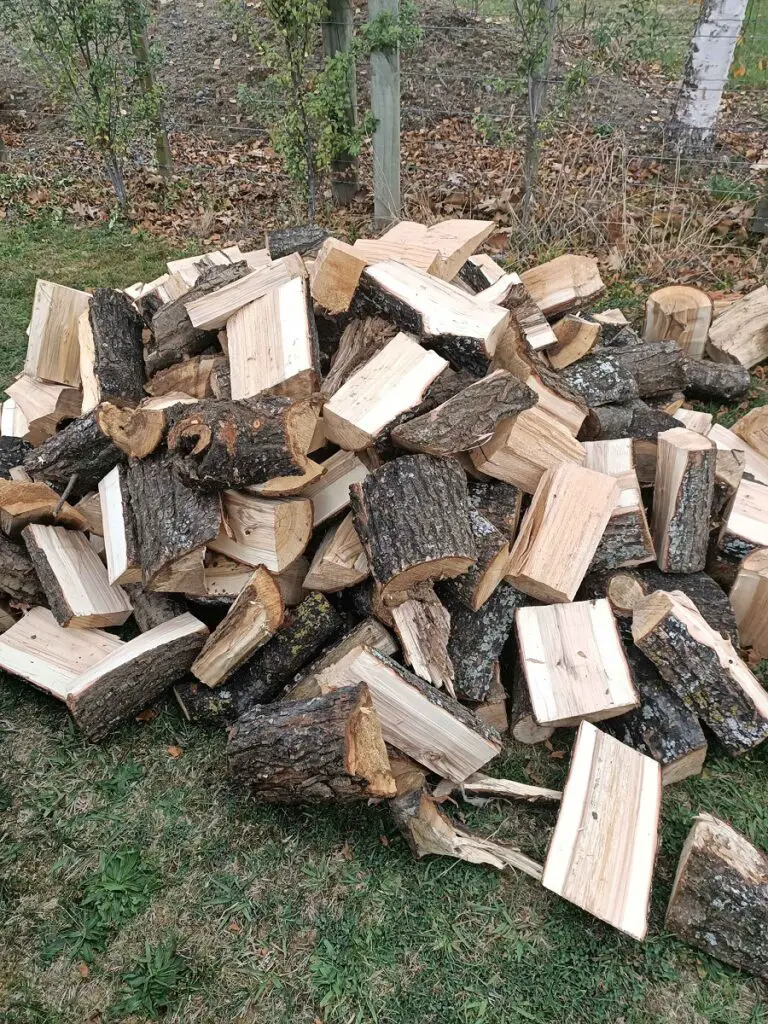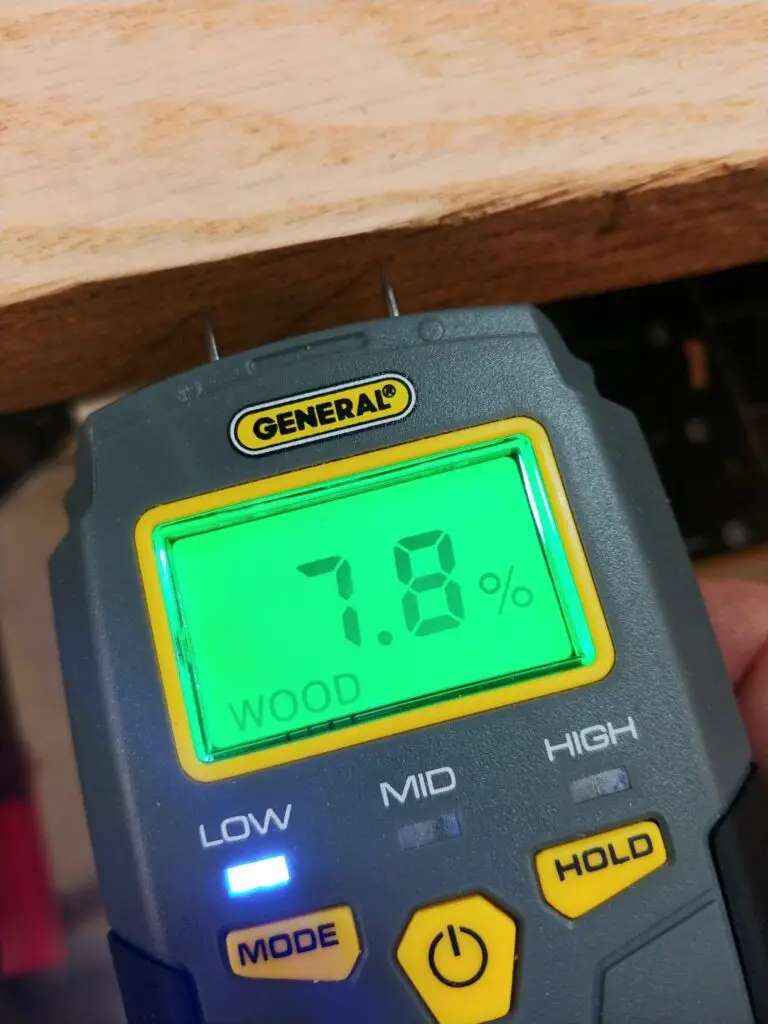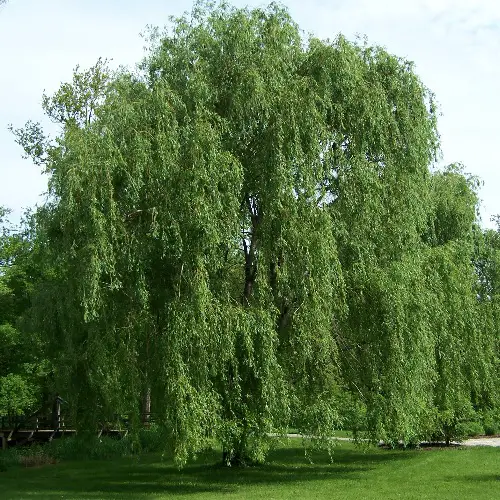Willow is not a good firewood choice because it has a low BTU rating and produces more creosote than typical hardwoods. While willow doesn’t produce much smoke when it burns, the smell from that smoke isn’t pleasant, which makes willow not a great choice for use in outdoor firepits. Willow also has a high sap content, so it doesn’t burn cleanly. This creates problems if you use willow in your indoor fireplace or stove.
Willow can take up to two years to season, which is a longer seasoning period than most other hardwoods. Overall, willow should be avoided for use as firewood.
Table of Contents
Summary
- Heat Production: 14.2 million BTU/cord
- Weight: 4,320 lb/cord green
- Seasoning Time: 12-24 months
- Splitting Difficulty: Easy
- Sap Content: High
- Smoke: Low
- Smell: Strong and unpleasant
Willow is a light wood, which is why it takes so long to season. Since it takes a longer time to season than other hardwoods, willow has the potential to rot before its moisture content is below 20%. It’s an easy wood to split, similar to softer woods like pine. Willow could be a decent kindling source, but it should be avoided as a primary source of firewood for use indoors.

Heat Production
Willow doesn’t produce much heat, especially compared to other hardwoods with similar costs per cord. Willow clocks in at 14.2 million BTU/cord, substantially lower than popular firewood like hickory, oak, or birch, all of which burn at higher than 24 million BTU/cord.
This means you’d need to build a bigger fire to generate heat from willow firewood. That poses problems since willow doesn’t burn clean and creates more creosote than other hardwoods. If burned in an outdoor firepit, the creosote isn’t a concern.
Smoke Generation
Willow doesn’t produce a lot of smoke, but the smoke it does create has a strong, unpleasant odor. If burned when it’s not properly seasoned, willow produces a large amount of smoke. Even when properly seasoned, some varieties of willow tend to smoke more than most hardwoods.
Willow can be burned in an indoor fireplace if seasoned, but you need proper, well-functioning ventilation. Even then, with the amount of creosote willow produces, it’s best to avoid burning it indoors.
Seasoning Time
Willow has a high sap content and is a lighter wood, so it takes longer to season than other hardwoods. Because it’s a light wood, willow tends to rot before it’s properly seasoned. It’s best to split willow completely for seasoning instead of seasoning it in whole logs.
Even when seasoned, willow pops and cracks while burning, thanks to its high sap content. You’ll want a moisture meter to determine when the moisture content is 20% or below. Moisture meters can be bought at a fair price at many hardware stores.
I personally recommend this General Tools Moisture Meter. It allows you to accurately gauge how wet your firewood is and whether it is sufficiently seasoned. Over time you can also see how quickly the moisture is dropping and how much longer you need to keep your firewood dropping until it is seasoned and ready to burn.
Press the sharp pins into the wood and you will quickly see the readout show the moisture ranging from 5% to 50%. It also has a Low/Mid/High indication depending on whether the wood is dry enough, so you don’t need to remember the actual values.

Burning Smell
Willow has a strong, unpleasant odor when burned, even when seasoned. Some varieties of willow are more pleasant than others, but most willow has a strong burning smell. This is another reason that it’s best to use willow only in an outdoor firepit. Burning indoors, especially if you don’t have good ventilation, can cause some problems.
If you are looking for firewood, especially for smoking meat or are especially sensitive to odor, I have put together a guide to the best smelling firewood you may enjoy.
Creosote Buildup
Usually, creosote buildup is only a problem with softwoods, and willow is technically a hardwood. However, willow does generate a good amount of creosote when burning, thanks to its high sap content and long, loose fibers. Willow also generates creosote because it burns at such a low temperature.
Creosote is black ash made up of unburnt wood particles. This ash gathers in fireplaces, wood stoves, and chimneys. Creosote is flammable, so its buildup poses a serious safety risk. Often, creosote buildup happens when burning softwoods like pine. Creosote buildup is another reason that burning willow in an indoor fireplace is not a good idea.
Splitting Difficulty
Willow is an easy wood to split. It has long, loose fibers that give way to an axe. However, you can run into problems with willow branches. They tend to be crooked, which makes splitting difficult. Often, though, splitting willow is comparable to splitting soft pine.
Different Types/Species
There are over a dozen different varieties of willow. One of the most common is the weeping willow, which is native to China. Other willows, like the Coyote or Scouler’s, are native to North America. Even with this wide variety, there isn’t a specific type of willow that makes great firewood. Most of them share the same strong, unpleasant odor when burned, too.
While willow isn’t good firewood, it is prized in woodworking. It’s a favorite of woodturners, and luthiers even use willow blocks when building violins and violas.
Since willow produces a lot of smoke, it could be a good choice for use in smoking food if mixed well with other hardwoods.

Comparison to Other Woods
Compared to other hardwoods, willow is easily at the back of the pack for heat production. That alone should be enough to make you look elsewhere for your firewood needs. Its low BTU rating and high sap content make it problematic for indoor and outdoor fireplaces.
| Firewood | Million BTU/Cord (source) | Ease of Splitting | Coals | Overall Quality |
| Willow | 14.2 | Easy | Medium | Low |
| Bur oak | 26 | Easy | Good | Excellent |
| Maple | 25 | Easy | Excellent | Excellent |
| Almond | 26.7 | Medium | Excellent | Excellent |
Willow is better suited as kindling or for a smoker use than firewood. If you have a lot of willow on your property or know someone who does, it’s best used as firewood outdoors. In an outdoor firepit, the creosote buildup doesn’t pose the same problem it does indoors.
Frequently Asked Questions
Can you burn willow in a firepit outdoors?
Yes. This is where willow should always be burnt. Unless used for kindling, it’s best to avoid willow firewood in an indoor setting. The creosote buildup and low heat production make it a poor choice for indoor fireplaces.
Is it safe to burn willow in a fireplace indoors?
Willow is safe to burn indoors, but only if you regularly clean your fireplace, stove, and chimney. The creosote buildup from willow poses a serious safety risk. It’s best to avoid burning willow indoors, unless you’re using it in small amounts for kindling. Even then, other woods are a better kindling choice.
How much does willow firewood cost to buy?
Willow goes for about $225 per cord. While that’s cheaper than some hardwoods, the price shouldn’t be why you decide to burn it, especially indoors. Other woods have a comparable cost per cord and burn hotter and cleaner.
Conclusion
Overall, willow is a poor choice for firewood. It produces little heat, generates a lot of creosote, and has a high sap content. It can be used for smoking food if mixed with other hardwoods. If you decide to burn willow, it’s best to do so in an outdoor firepit, where creosote isn’t a problem. Willow has a strong, unpleasant odor when burned, however, so it might not be a good choice for use outdoors, either.
Other woods have a comparable cost per cord and produce far more heat than willow. You’d be better off looking at woods with higher BTU ratings and less creosote production for your firewood needs.
